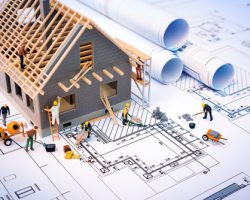 Creating a high-quality and functional building is essential for any construction project. Whether it’s a residential property, commercial establishment, or even an industrial facility, optimizing the quality and function is crucial to ensure its long-term success. Here are some key factors to consider in order to maximize the quality and function of your building.
Creating a high-quality and functional building is essential for any construction project. Whether it’s a residential property, commercial establishment, or even an industrial facility, optimizing the quality and function is crucial to ensure its long-term success. Here are some key factors to consider in order to maximize the quality and function of your building.
1. Thorough Planning and Design:
The first step to ensuring a high-quality and functional building is to invest time and resources in thorough planning and design. This involves engaging with experienced architects, engineers, and consultants who can help develop a clear vision for the building. This process includes establishing the intended use of the space, analyzing the site conditions, and considering the needs and desires of the occupants.
2. Utilizing Quality Materials and Equipment:
The choice of materials and equipment used in construction significantly impacts the overall quality and function of a building. It is crucial to prioritize the use of high-quality materials that are durable, resistant to wear and tear, and can withstand the environment in which the building is located. Similarly, utilizing state-of-the-art equipment and technologies can enhance the functionality and efficiency of various building systems.
3. Attention to Detail in Construction:
Paying attention to detail during the construction phase is vital to ensuring the quality and function of a building. Every step of the construction process, from forming the foundation to installing the finishing touches, must be executed with precision. Proper supervision and quality control measures should be in place to prevent errors or subpar workmanship that could cause problems in the future.
4. Optimizing Space and Layout:
To maximize the function of a building, it is important to carefully analyze the layout and optimize the available space. This involves considering the flow of movement within the building, ensuring adequate space for different activities, and incorporating flexible spaces that can adapt to changing needs. Proper space planning can contribute to improved productivity in commercial buildings, enhanced livability in residential properties, and efficiency in industrial facilities.
5. Integrating Smart Building Systems:
The integration of smart building systems can greatly enhance the quality and function of a building. Smart technologies, such as automated lighting and HVAC systems, advanced security measures, and energy management systems, can contribute to improved comfort, safety, and efficiency. Additionally, incorporating smart building systems also helps future-proof the building by allowing for easy upgrades and scalability as technology advances.
6. Adequate Lighting and Ventilation:
Proper lighting and ventilation are essential aspects of a high-quality and functional building. Well-designed lighting systems should provide adequate illumination while considering energy efficiency and occupant comfort. Similarly, proper ventilation systems are crucial to maintain indoor air quality, regulate temperature, and prevent the accumulation of moisture or odors. Careful consideration should be given to natural lighting and ventilation options as well.
7. Regular Maintenance and Upkeep:
Maintaining the building in good condition is crucial for ensuring long-term quality and functionality. Regular maintenance and upkeep should be carried out to address any wear and tear, identify and fix potential issues in a timely manner. This includes routine inspections, cleaning, repairs, and equipment servicing. Neglecting maintenance can lead to costly repairs and a decrease in the building’s overall quality and function.
8. Continuous Improvement and Adaptation:
Lastly, the process of maximizing the quality and function of a building doesn’t end once construction is complete. It is essential to continuously assess and evaluate the building’s performance, gather feedback from the occupants, and make necessary adjustments to optimize its functionality. As needs change or new technologies emerge, being open to adaptation and improvement will ensure that the building remains efficient and fit for its intended purpose.
Summary
Maximizing the quality and function of a building requires thorough planning, the use of quality materials and equipment, attention to detail during construction, optimized space and layout, integration of smart building systems, consideration of lighting and ventilation, regular maintenance and upkeep, and a commitment to continuous improvement. By prioritizing these factors, you can create a building that not only meets the needs and desires of its occupants but also stands the test of time.
Need General Contractors in Langhorne, PA?
John G. Moser & Sons, Inc. has been your local family-owned and operated general contractor since 1952! With over 60 years of experience, remodeling, building, and maintaining homes, you can rest easy knowing you’re in good hands. John G. Moser & Sons, Inc. is the company you call when you want personalized, affordable, and quality service. What are you waiting for? Give us a call today!
